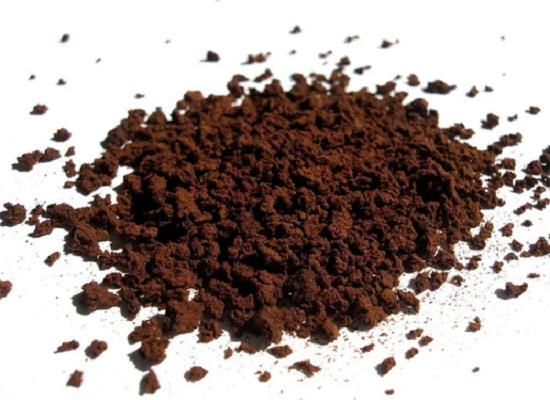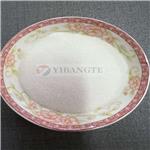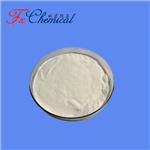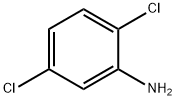2,5-Dichloroaniline: applications and safety
Oct 25,2023
General Description
2,5-Dichloroaniline is a compound that has various applications and is of interest in the field of antimicrobial agent synthesis. However, it is important to note that it can be a source of toxic chemicals, such as PCBs, in commercially available paints. The concentrations of PCBs in these paints can range from 0.050 to 29 mg/kg, with potential health and environmental consequences. In terms of antimicrobial applications, derivatives of 2,5-Dichloroaniline show promise in inhibiting the growth of harmful bacteria and fungi. Further research is being conducted to explore its full potential in this area. It is crucial to handle 2,5-Dichloroaniline with caution due to its toxic nature, ensuring proper safety measures are taken during production and handling.

Figure 1. 2,5-Dichloroaniline
Applications
Source of polychlorinated biphenyls
2,5-Dichloroaniline is a source of PCBs found in commercially available paints. PCBs are a group of toxic chemicals that were once widely used in various industrial applications. The study found that pigments containing dioxazine violet (PV23, PV37) and diketopyrrolopyrrole (PR254, PR255) were contaminated with PCBs, including major congeners such as PCB-56, PCB-77, PCB-40, PCB-5, and PCB-12, and PCB-6, PCB-13, and PCB-15, respectively. The concentration of PCBs in these paints ranged from 0.050 to 29 mg/kg, with toxic equivalency values ranging from 1.1 to 160 pg-TEQ/g. Naphthol AS, an azo-type pigment, was also found to contain PCB-52 in paint containing pigment red (PR) 9 with 2,5-dichloroaniline as its source. Additionally, major congeners such as PCB-146, PCB-149, and PCB-153 were identified in paint containing PR112 produced from 2,4,5-trichloroaniline, which have chlorine positions similar to aniline, indicating that these congeners are by-products obtained during the synthesis of pigments. The concentrations of PCBs in paints containing PR9 and PR112 ranged from 0.0042 to 0.43 and 0.0044 to 3.8 mg/kg, respectively, with TEQ for PR112 ranging from 0.0039 to 8.6 pg-TEQ/g. Therefore, it is important to carefully consider the source and composition of pigments used in paints to ensure that they do not contain toxic chemicals like PCBs, which can have serious health and environmental consequences. 1
Synthesis of antimicrobial agents
The application of 2,5-Dichloroaniline in the synthesis of antimicrobial agents has been a topic of interest for several years. In 1957, Yoshina synthesized 2,5-dichloro-4-thiocyanatoaniline and investigated its potential antibacterial and antifungal activities. This particular compound was found to inhibit the growth of Trichophyton at a concentration of 3µg/ml. In recent times, various derivatives of halogenated benzene, such as pentachlorophenol and Bithionol, have been widely used as effective disinfectants. Building upon this knowledge, researchers have attempted to synthesize N-amide derivatives of 2,5-dichloroaniline, including 2,5-dichloro-4-bromo- and 2,5-dichloro-4-thiocyanatoaniline.These derivative compounds hold promise as potential antimicrobial agents due to the presence of 2,5-Dichloroaniline as a core component. By modifying its structure through the introduction of different functional groups, scientists aim to enhance its antimicrobial efficacy and expand its range of applications. Further studies and research are ongoing to explore the full potential of 2,5-Dichloroaniline and its derivatives in the synthesis of antimicrobial agents, with the ultimate goal of developing effective and safe treatments against harmful bacteria and fungi. 2
Safety
2,5-Dichloroaniline is classified as a toxic substance due to its potential health hazards. The thermal decomposition of this compound can release aniline and other toxic gases, making proper handling and storage an important safety consideration. The rat oral LD50 of 2,5-Dichloroaniline has been determined to be 2900mg/kg, indicating that it can be harmful if ingested or inhaled. To ensure safety when working with 2,5-Dichloroaniline, production operators should wear protective equipment, such as gloves, goggles, and respiratory masks. The production workshop should be well-ventilated to prevent the accumulation of toxic gases, and the equipment used should be closed to minimize exposure. In summary, while 2,5-Dichloroaniline has potential applications in various fields, including antimicrobial agents, it is important to handle it with care due to its toxic nature. 3
Reference
1. Anezaki K, Kannan N, Nakano T. Polychlorinated biphenyl contamination of paints containing polycyclic- and Naphthol AS-type pigments. Environ Sci Pollut Res Int. 2015 Oct;22(19):14478-14488.
2. KIMURA R, YABUUCHI T, HISAKI M, SUGIMOTO H, OHYAMA A, MOCHIDA K. Studies on the synthesis of new antimicrobials. I. Synthesis of 2,5-dichloroaniline derivatives and their some antibacterial activities. Chem Pharm Bull (Tokyo). 1962 Dec;10:1226-1232.
3. 2,5-Dichloro aniline: Safety and Hazards. PubChem, 2005, CID: 7262.
- Related articles
- Related Qustion
- 2,5-Dichloroaniline: Electrochemical Synthesis and Detection Method Mar 25, 2024
Electrochemical synthesis of 2,5-Dichloroaniline offers an eco-friendly approach with high yields, while its detection in estuarine water highlights potential ecosystem impact.
- 2,5-Dichloroaniline - Pigment Uses, Synthesis etc. Nov 23, 2021
2,5-Dichloroaniline is used as an intermediate for dyes and pigments, as well as for organic synthesis and the preparation of nitrogen fertilizer synergist. 2,5-dichloroaniline is an intermediate for the herbicide dicamba.
Docosyltrimethylammonium methyl sulphate is a versatile ingredient, enhancing the performance of personal care and hair care products.....
Oct 25,2023APIStannous methanesulfonate is a versatile and stable catalyst used in electroless plating, but requires careful handling.....
Oct 26,2023API2,5-Dichloroaniline
95-82-9You may like
2,5-Dichloroaniline manufacturers
- 2,5-Dichloroaniline
-

- $0.00 / 1kg
- 2023-11-04
- CAS:95-82-9
- Min. Order: 1kg
- Purity: 99%
- Supply Ability: 50000kg
- 2,5-Dichloroaniline
-

- $0.00 / 25KG
- 2023-01-14
- CAS:95-82-9
- Min. Order: 25KG
- Purity: 98%min
- Supply Ability: 30tons/month
- 2,5-Dichloroaniline
-

- $1.00 / 1kg
- 2019-07-06
- CAS:95-82-9
- Min. Order: 1kg
- Purity: 99%
- Supply Ability: Customized




